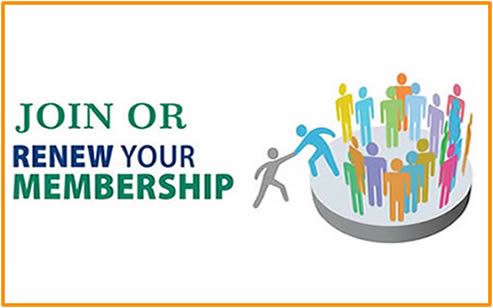THE CLINICAL UPDATE | SPRING 2022
How Learning Schema Therapy Enhanced My Ability to Help Clients by Kathryn Rudlin, LCSW Exploring Self-Identity and Intergenerational Trauma through Collage by Mindy Tran, MFT
Curiosity Helps Us Grow: Personally and Professionally by Cynthia Schwartzberg, LCSW Best Practices for a Successful Job Search by Natalia Peddycoart, MSSW Cartoon: Looking within or asleep by Jean Rosenfeld Community poem: Journey of Embracing My Diverse Identity by Anonymous Board Member
Membership renewal for fiscal year | Upcoming events
|
Letter from our President, Amanda Lee, LCSW
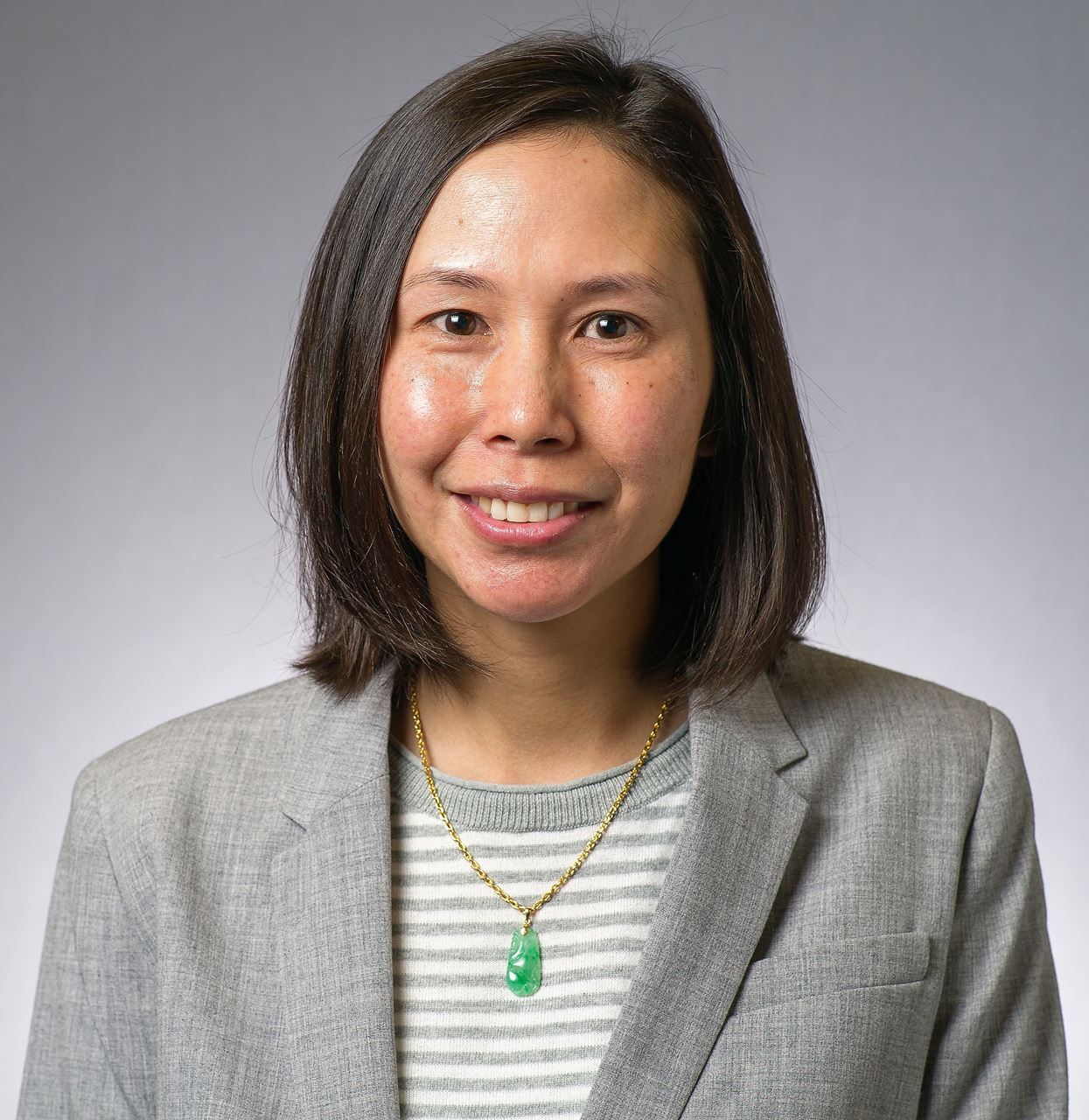
Social Work Month provides us with an opportunity to celebrate our profession, come together as a community and reflect on the impact of our practice. The value of who we are, what we have done and continue to do, particularly through a public health and behavioral health crisis, has caught the attention of policymakers. Governor Newsom’s 2022-2023 Budget Summary released in January proposes millions of dollars of funding focused on social work training programs and expanding social workers. As our state recognizes the critical need for a considerable investment in workforce development and sustainability, the California Society for Clinical Social Work (CSCSW) continues to advocate for specific recognition of and support to social workers and affiliates delivering clinical services.
To this end, the Board of Directors has formulated a Strategic Plan to provide a framework for adhering to our organization’s mission, “To advance and promote the profession and practice of clinical social work”. The Strategic Plan outlines three high-level goals: 1) Strengthening networking through non-educational and educational opportunities for social workers to connect, 2) Promoting diversity, equity and transformation of CSCSW through increased membership and retainment of underrepresented individuals, and 3) Increasing and retaining CSCSW membership through targeted marketing and social media strategies. Members are invited to attend an upcoming virtual Town Hall during which they can ask questions about and provide feedback on the Strategic Plan. Members are also encouraged to share their written input during the comment period. The Board of Directors and I would like to thank Dr. Golnaz Agahi of SocialWise Consulting for generously donating her time and expertise to facilitate the strategic planning process which began before the pandemic. I also want to recognize the contributions of past and current members of the Board of Directors and District Coordinators in developing this plan.
In many ways, CSCSW’s statewide districts and committees have already started doing the work in putting this plan into action. During 2021, CSCSW hosted over a dozen educational workshops, including “Right Brain-to-Right Brain Psychotherapy: A Master Class with Allan Schore”, “Incorporating Critical Race Theory in Clinical Social Work”, and the “Art of Group Facilitation Using Zoom”. CSCSW also offered monthly District Meetings featuring presentations on a variety of clinical topics, such as “The Art of Psychotherapy” series, “Codependency Turns 40! Should We Celebrate, Adapt or Simply Reconsider?”, “Providing Affirming Care for Clients who Identify as Trans, Nonbinary, and/or Gender Nonconforming”, and “Using Action Methods from Psychodrama in Groups, On Zoom”. These educational opportunities are bringing together members from across our state, promoting connection and expanding our community. Members are also enhancing their networks through a variety of groups offered like the Telehealth Consultation/Support Group and the Support Group for ASWs and Social Work Students. In late April, CSCSW will be introducing an Ethics Consultation Group for its members. We also look forward to receiving and implementing your input on approaches in strengthening networking opportunities.
The Clinical Social Work Association (CSWA) Code of Ethics, National Association of Social Workers (NASW) Code of Ethics and our core values as social work professionals challenge us to practice cultural humility and to critically reflect on and respond to social and racial injustice. Members of the Diversity, Equity and Transformation (DET) Committee seek to inspire meaningful change, holding space for and uplifting the voices of underrepresented individuals within CSCSW. The “REAL Talk” Consultation/Support group provides a brave space for those in the field who self-identify as Black, Indigenous or a Person of Color (BIPOC) to process the ongoing violence against and politicizing of the lives of minorities. “AAPI Clinicians: A Self-Care Space'', an online rest space for clinicians who identify as Asian Americans and Pacific Islanders (AAPI) to process, connect, and share, was offered in response to the Atlanta spa shootings and the rise in anti-Asian hate and violence during the pandemic. All members are invited to participate in monthly DET Committee meetings to do this important work together and develop resources to promote allyship. CSCSW has also engaged in collaborative efforts with other social work organizations on joint statements addressing key issues and events, such as the mistreatment of Haitian refugees and social worker salaries. Advocacy Committee members are supporting one another in overcoming the barriers to civic engagement. The Education Committee is planning future training opportunities on healing from racial trauma, interrupting microaggressions, intersectionality and identity, QTBIPOC and LGBTQIA+ awareness and disability justice. CSCSW is also partnering with Yellow Chair Collective and the NASW SoCal API Social Work Council on "An APIDA Mental Health Conference: Through Our Lens, With Our Voice” coming this August. Your membership and active involvement in CSCSW keeps this transformative momentum going. Consider adding your unique voice and lived experience to support these efforts by joining a committee or applying to become a CSCSW board member. This organization is buttressed by the generosity of volunteers who care deeply about its mission.
The past two years have taught us a lot about our capacity for adaptability and innovation in our profession and clinical practice. The concept of community has been reimagined through the act of coming together in virtual spaces. Forced to retreat from the physical world which became threatening to us and to our clients, many of us found our way to a new way of being (and being with each other) within the digital world. CSCSW recognized and responded to the need of maintaining access and connection for its members. CSCSW’s new website and logo were launched in 2021, providing its members with improved access to benefits such as recorded webinars, Therapist Finder, Supervisor Finder and Marketplace. We hope members will actively use the tools on our website to promote the work that they do, connect with other clinicians when referrals are needed, and to find qualified clinical supervisors or other resources. When reviewing options for the new logo design, it was important that the image evoke a sense of calm and support, not unlike how we hope to show up in our work with clients. When you look at the image, you might see a hand gently holding up an object, or you may see a person reaching out to someone. Our logo tells the story of the healing power of our clinical interventions. Another strategy for telling our story is utilizing social media content to highlight the value of the profession and practice of clinical social work. CSCSW has hired a Social Media Manager to develop and promote targeted messaging that celebrates and elevates who we are and what we do. If you have not joined our Facebook Group, Facebook Page or LinkedIn, please do so. We hope to continue to grow our community on these digital platforms and want to know how we can improve your experience within them. If you would like to create and contribute content, e.g. a podcast, a YouTube video, a meme, etc., as a way to support this community, consider joining the Communications Committee.
Social workers have always been “influencers” and it is not any stretch of the imagination that we can effect great change and motion whether in person or online. Therefore, we invite you to “move and shake” with us as we implement conscientious change through our Strategic Plan. Finally, we hope you can join us on March 29th for a special event, “Self-Care: A Journey Towards Wellness”, in honor of Social Work Month. Celebrate Social Work!
In Solidarity,
Amanda Lee, LCSW
President, CSCSW
How Learning Schema Therapy Enhanced My Ability to Help Clients
By Kathryn Rudlin, LCSW | Advanced Certified Schema Therapist, Supervisor, Trainer
“Try to respect the reasons your schemas developed in the first place. In your childhood, it was essential for your emotional survival. But what was once a help to you is now hurting you, and it is time to give it up.” Dr. Jeffrey Young, developer of Schema Therapy
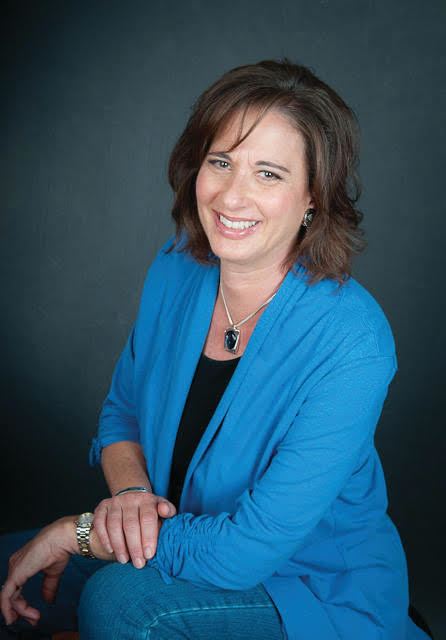 It was not initially my intention to become a schema therapist.
It was not initially my intention to become a schema therapist.
Prior to 2011, I didn’t know this therapeutic model existed. For years my work focused on facilitating therapy for families struggling with a troubled teen. Then priorities changed, as I began to unearth why growing up in my family had left me feeling unworthy and confused.
This inquiry resulted in significant personal healing and inspired me to write Ghost Mothers: Healing From the Pain of a Mother Who Wasn’t Really There. The book attracted adults who related to this pain, and my private practice flourished. Therapy flowed well for several years; clients experienced relief in being seen and understood, healing goals were met, and important changes made.
Then difficult therapeutic moments began to emerge. Trying, without success, to create new behavior patterns and soothe the child inside. I had to admit I didn’t have a strong framework or strategies for the deep healing needed by clients struggling to resolve childhood trauma.
When I discovered Schema Therapy, a proven therapy approach for traumatized clients, I hoped this well-conceptualized, experiential model would provide ways to create the profound changes my clients deserved.
What happened when I began using Schema Therapy with clients.
My client ‘Jodi’ grew up with a narcissistic mother who was critical, controlling, and non-nurturing. Jodi wanted to understand the dynamics of her family and the impact of constantly trying to please her mother; she hoped to change patterns to include feeling over-emotional, unloved, and doing too much for others.
(1) Identifying ‘schemas’ is an essential part of Schema Therapy. Schemas incorporate emotion, thoughts and body sensations that come to define how we view the world, based on what was experienced growing up. Jodi’s primary schema is ‘Emotional Deprivation.’
~ You were impacted in many painful ways growing up with a mother who wasn’t taking good care of you. The little girl you once were felt deprived when she needed love, nurturing or attention. You not only didn’t get this; your mom was often angry in response.
(2) Dr. Young describes the power of identifying a schema, then working with it as a ‘hot cognition;’ helping clients experience all aspects of what it feels like when their schema is activated. Emotional deprivation is Jodi’s life narrative - trying so hard and getting so little.
~ I want to help you understand this schema better. Let’s use imagery to explore what happens when you feel deprived in the present, as you did so often as a child. We’ll learn together what gets triggered inside you; what this little girl needed then, and what she longs for now.
(3) The experience of activating a schema is powerful for client and therapist. Doing so ‘links’ current emotional reactions and patterns to unresolved pain from the past.
~ We were able to re-create the experience of being emotionally ignored. This ‘bridge’ to the past helps us understand how devastating it was when your boyfriend said he didn’t want to come over last night. You strongly felt unloved and unimportant, as you often did as a child.
Schema Therapy works and I’m passionate about using and teaching this model!
Schema Therapy creates a therapeutic flow from present to past, helps younger parts heal and provides experiential strategies to move forward. Not only understanding what’s unresolved, but safely experiencing it. Clients really like this approach; it’s empowering and provides a dynamic healing blueprint for lasting change.
Jodi put it this way:
The little part of me needed healing, the adult part needed more self-compassion. My narcissistic mother had convinced me that I was worthless and had nothing to offer.
Using Schema Therapy helps traumatized people make sense of their past in effective and powerful ways. For therapists and clients this is gratifying, exciting, creative therapy work.
Kathy Rudlin is the first therapist in California to become certified as an Advanced Schema Therapist. She uses Schema Therapy to provide hope and healing to adult children of narcissistic parents and is director of the California Schema Therapy Training & Certification Program: www.learnschematherapy.com
Exploring Self-Identity and Intergenerational Trauma through Collage
By Mindy Tran (she/her), AMFT #112365
“Trauma decontextualized in a person looks like personality. Trauma decontextualized in a family looks like family traits.
Trauma in a people looks like culture.” -- Author Resmaa Menakem, MSW, LICSW, SEP
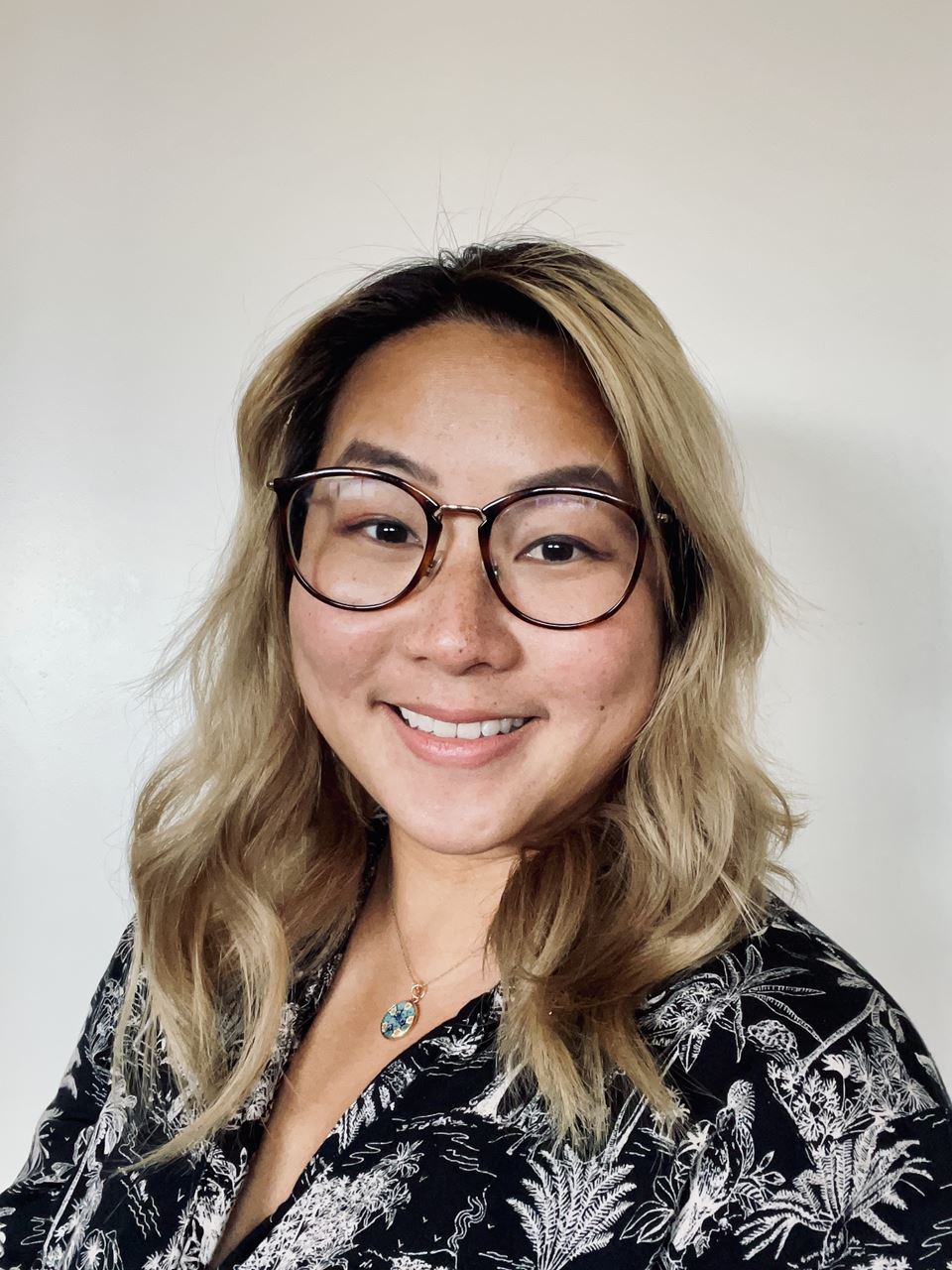 When our ancestors and elders lived through traumatic experiences such as war, colonization, oppression, or violence, their bodies and brains did what they needed to in order to survive and move on with their lives. They may not have had the resources at the time to allow for their bodies to fully metabolize and process what they just experienced, so they adapted and developed coping strategies in the best way they could. Some survivors might refuse to speak about the past so as to not evoke overwhelming emotions, others might turn to alcohol or other substances to numb any pain or overwhelm, and others might immerse themselves in their work to keep themselves distracted. As generations pass and the effects of the original traumatic experiences go unaddressed, these coping strategies may become less and less adaptive for their future generations. As a result, our present-day generation might have learned to manage stress and difficult life experiences in a certain way that worked in the past, but may not be as effective in our daily lives and relationships. By bringing awareness to the different parts of our identities, both past and present, we are able to better identify what (and how) intergenerational patterns show up in our lives. We can then use that information to redefine how we would like to go about our lives moving forward.
When our ancestors and elders lived through traumatic experiences such as war, colonization, oppression, or violence, their bodies and brains did what they needed to in order to survive and move on with their lives. They may not have had the resources at the time to allow for their bodies to fully metabolize and process what they just experienced, so they adapted and developed coping strategies in the best way they could. Some survivors might refuse to speak about the past so as to not evoke overwhelming emotions, others might turn to alcohol or other substances to numb any pain or overwhelm, and others might immerse themselves in their work to keep themselves distracted. As generations pass and the effects of the original traumatic experiences go unaddressed, these coping strategies may become less and less adaptive for their future generations. As a result, our present-day generation might have learned to manage stress and difficult life experiences in a certain way that worked in the past, but may not be as effective in our daily lives and relationships. By bringing awareness to the different parts of our identities, both past and present, we are able to better identify what (and how) intergenerational patterns show up in our lives. We can then use that information to redefine how we would like to go about our lives moving forward.
Trauma, including intergenerational trauma, has the effect of fragmenting our sense of time, power, control, and sense of self. On the other hand, collage is an activity that takes fragmented pieces and reassembles them into a new image. A collage is an art piece that is traditionally created by assembling a variety of different images and materials that are then glued in place onto a surface. In using collage as a metaphor for our identity, we take the fragmented imagery that resulted from our past traumas and create a composition that is representative of our past and present selves and give it a whole new meaning.
This collage activity uses paper materials. If these materials are not accessible to you at the moment, you can also create a digital collage using apps and websites such as Adobe Photoshop, Microsoft Powerpoint, www.canva.com, or www.freemix.com.
Instructions for Identity Collage Activity
Gathering materials:
- Images from magazines, printouts, photos, old books, etc.
- Scissors
- Glue
- Cardstock or cardboard (as a base for the collage)
Setting up the creative space:
Find an area where you will create your collage. This could be anywhere from a corner at your kitchen table, to using an entire room in your home, to sitting outside on a picnic table. If you have items that inspire you, feel free to assemble those around your creative space. You may also consider incorporating items that evoke your senses, such as candles, aromatherapy, flowers, or music in the background.
Guided meditation:
Set aside 5-15 minutes for this meditation. This meditation is intended to help you check in with your body and mind, while also heightening your connection to any body sensations. You can use this connection to your somatic sensations to inform you on what to include and how to assemble your collage.
Take a moment to settle into your space. Whether you are in a seated position or laying down, use any props that can support your physical body in finding comfort while you are here (ex: using a blanket/pillow under the head, sitting in a chair with a backrest, sitting up on a yoga block, etc.). Begin to notice the rhythm and depth of your breathing. This might be the first time today where you are breathing intentionally, so take your time to find a rhythm that feels comfortable in the body to maintain.
Orient yourself to the space that you are in by scanning your gaze across the room. Notice the shapes, colors, lightness, and shadows in your space. Notice these things without getting too caught up in any narrative that arises; simply notice what you see. Eventually, allow your gaze to look straight ahead, and either close your eyes or look gently over the tip of your nose.
Turn your awareness to your other four senses. Notice what you hear- listen for sounds that are near, far, inside, and outside of your body. What do you smell? What can you taste? What can you touch or feel with your hands and your skin?
Notice how it feels for you to take in information from your senses. Then, keep turning your awareness inward and notice how your body feels. Is there comfort or discomfort anywhere? What feels neutral, or has no feeling at all? How do you know that this is how your body is feeling in this moment?
Start to shift your awareness away from your senses, and now start to notice what arises when you ask yourself “what identities do I embody?” What are the first thoughts and descriptions that come to mind? How does it feel in the body as you evoke those thoughts? Is there any sense of pride or joy, or any shame or resistance? Take a moment and allow your mind to continue to explore the different parts of your identity, and continue to take note of any body sensations associated with this information.
Now, take a moment to think about your history and ancestry. Who comes to mind when you think about ancestry, and how does your body respond to those folks? What events or obstacles did your elders or ancestors have to overcome? What connections does your mind and body make between these past events and any character traits or qualities that show up within your family (and within yourself)?
Spend a few more breaths with whatever arises in your mind and your body. Observe if any images, sounds, smells, and/or sensations that come to mind during this meditation.
When you feel ready to release this meditation, take a full inhale through the nose and then exhale out the mouth with a big, audible sigh. As your breath returns back to its natural rhythm, gently blink your eyes open and scan the room that you are in. Be sure to look side to side, up and down, and behind you as well. Start to wiggle your fingers and toes, and maybe even find movement in your joints. Take one more moment to observe and check in with the body before moving on with your day.
Creating a collage:
- Collect your images. Once you have completed your meditation, take your time to browse through any imagery that resonates with you as you think about your identity. Collect all of the images that call out to you, regardless of whether you have a reason for selecting them. If you are using magazines, you can decide if it feels better to rip or to cut out these images and shapes.
- Assemble the images. Explore different ways of assembling the images that you collected. Re-arrange and make as many changes as you would like to your collage.
- Paste the images in place. Once you feel satisfied with your piece, start to glue down the pieces in place.
- Create a title for your collage.
Self-inquiry/journal about your piece:
Once you’ve completed your collage, take a moment and observe. Notice what patterns or themes are contained in your piece that relate to yourself, your history, and your past experiences. Notice how it feels to see the separate cutout pieces come together to create a new image.
What message does your piece have to say? What did you include/exclude? How did your body and your senses feel as you were selecting images, and as you were assembling the pieces? What aspects of this piece inform you on the different parts of your identity? Take your time to write down any other thoughts that arise.
Mindy Tran (she/her), AMFT #112365, is a therapist based in San Diego, CA who centers a lot of her work on exploring intergenerational trauma and healing by incorporating body-based techniques and interventions. Mindy’s journey as a mental health professional began from her own journey of learning more about her identity as a 2nd generation Asian American woman and the daughter of refugees from the Vietnam war. Mindy also is a certified yoga instructor with over 10 years of teaching experience. She teaches yoga and mindfulness from a trauma-informed lens with an emphasis on the connection between biomechanics and the nervous system.
Curiosity Helps Us Grow: Personally and Professionally
By Cynthia Schwartzberg, LCSW
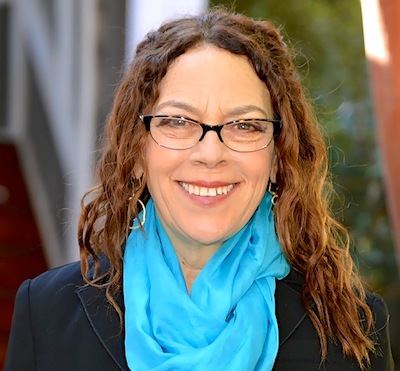 As social workers, we begin every session with a curious mind and heart. Every session with our clients is a gift of opportunity to dive deeper into their histories, feelings, and thought processes as they discover what they need.
As social workers, we begin every session with a curious mind and heart. Every session with our clients is a gift of opportunity to dive deeper into their histories, feelings, and thought processes as they discover what they need.
Curiosity is defined as a strong desire to know or learn something. One of the most widely believed theories about what fuels our curiosity is that it motivates learning (Kidd & Hayden, 2015). Every bit of knowledge we soak up from this mysterious world increases our chances of survival.
Curiosity is key to finding new ways to help ourselves, our patients, our communities, and our world. This is why I have chosen to expand on the theme of curiosity and deep learning about ourselves and the world around us in my book, the Curious Voyage: A Rule-Breaking Guidebook to Authenticity. In this book, I take the reader on a voyage to discover their inner landscape regarding their values and priorities. We see how we are all connected, and the way we live is often on automatic pilot. This book encourages people to challenge the "rulebook" they were raised with and discover their authentic selves. It is packed with many clinical and personal stories.
Through my nearly forty years of work, I have come to love witnessing someone changing a pattern that has not served them in life. Watching as they drop toxic habits and make changes for the better can be a truly wonderful and inspiring event to witness.
I’ve found Brainspotting to be an effective clinical tool in nurturing a curious mindset. Brainspotting was first discovered by Dr. David Grand, Ph.D., in 2003. Dr. Grand found that brain activity sorts itself according to one's eye activity and developed a technique for utilizing that discovery for healing. The technique taps into a person's innate wisdom to heal body and mind.
Brainspotting has kept me in awe of how the whole process works. Brainspotting has been a great addition to my work as it has taught me to dwell in the unknown with my clients, stay curious about the work they are doing and realizing I do not have to know what they are internally exploring as they are in a state of focused mindfulness (part of the Brainspotting treatment) as I trust their innate wisdom to heal.
Brainspotting utilizes the brain/body relationship and focused mindfulness. Our senses collect information from our environment which our brain then interprets. Brainspotting provides a supportive framework to sort through what information we want to keep and what we want to let go of. As Dr. Grand said, “Where you look affects how you feel” (Grand, n.d.). If you are thinking of something like “something is wrong with me”, and feeling a tightness in your stomach, looking to the right may leave you feeling different than when you look straight or to the left.
A typical Brainspotting session involves the client having an issue to work on, feeling a body sensation when thinking of that issue, and then finding an eye position that relates to the body sensations when thinking of the issue. Once finding the eye position, the client keeps their eyes fixed in focused mindfulness. Various internal sensations, images, dialogue or other internal experiences come up inside the client. The client can talk as much or as little as desired during a session, which is very helpful as the brain and body often shift from thought to thought. Body pains, wiggles, twitches or other sensations may be experienced.
If you aren't working with a therapist, sitting with an understanding friend can be very healing. The Self-Spotting Exercise, from the Curious Voyage: A Rule-Breaking Guidebook to Authenticity that is attached is a tool to shift your brain and body to help edit your rulebook.
Many present-day reactions and relationship patterns that we get caught in are based on past experiences. Brainspotting is extremely helpful to differentiate the past from the present and feel free from behavioral patterns that keep us stuck. Once you are aware of how your past patterns make you feel and act, you can choose to notice your responses and think through your actions. Some people can reframe their thoughts and change behaviors by simply talking through and thinking about things. For others, all the talk in the world will not shift deep unconscious patterns. They need to work with their body to unlock stuck thoughts. For everyone, working with the body can actually change the mind.
Multiple studies have supported the effectiveness of Brainspotting. One study, in particular, found that participants suffering after a traumatic event showed significant reductions in PTSD-related symptoms (Hildebrand, Grand, Stemmler, 2017).
One of the stories I want to share is the story of Claire*, a beautiful example of shifting patterns. Claire was in a session, feeling distraught, abandoned, and upset because her boyfriend at the time did not respond to her text. The more she stayed focused on her eye spot and was in deep focused mindfulness, she started to recall memories of when her father left the family when she was three and how her mother was never around to help her. As the older memories surfaced, she was able to feel compassion for her younger self. Over many months she was able to become kinder to herself, and although she continued to be annoyed by her boyfriend from time to time, she did not feel it as a personal attack in the same way.
With curiosity and some neuroplasticity, we can learn to change course and rewrite our rulebook. Neuroplasticity is a way our brains can change and grow. Our brains are able to form and reorganize connections, especially in response to learning, experience, or as the result of an injury. This can have long-lasting, life-changing results. I see it happen every day in my practice. I also see it happen to myself as a clinician. Curiosity, uncertainty, and the wonder of my fellow humans/clients have added great value to my life. I am thankful for the opportunity to add value to people's lives every day. I wish you a Happy Curious Voyage.
*All the examples in the Curious Voyage: A Rule-Breaking Guidebook to Authenticity are a compilation recreating experiences with clients. Claire is a representation of the work done by many individuals. Situations have been modified, expanded on or compressed. Names and identifying details have been changed for confidentiality purposes.
References:
- Curious Voyage: A Rule-Breaking Guidebook to Authenticity, Schwartzberg, C. (2021) s
- Hildebrand, A., Grand, D., & Stemmler, M. (2017). Brainspotting – the efficacy of a new therapy approach for ... https://brainspotting.com/about-bsp/research-and-case-studies/. Retrieved January 12, 2022, from https://brainspotting.com/wp-content/uploads/2018/02/Hildebrand-Grand-and-Stemmler-2017-MediterJrnlofClincPsychMJCP-Vol5-1.pdf
- Kidd, C., & Hayden, B. Y. (2015, November 4). The psychology and neuroscience of Curiosity. Neuron. Retrieved January 12, 2022, from https://www.ncbi.nlm.nih.gov/pmc/articles/PMC4635443/
- What is brainspotting? Brainspotting. (n.d.). Retrieved January 12, 2022, from https://brainspotting.com/
Cynthia Schwartzberg, LCSW, is a well-recognized leader, Senior Trainer, in the groundbreaking Brainspotting field. She has spent decades using Brainspotting and other highly regarded techniques to help individuals and couples discover their authentic selves and lead richer, freer and more meaningful lives. Cynthia is currently a practicing therapist in Atlanta who delights in the voyage of authenticity she and her clients embark on daily. In addition to supporting clients, Cynthia’s passion is with training and supporting clinicians develop and expand their work. Using the latest in neuroscience as well as ancient wisdom traditions from around the world, she has devoted her life to going as far as possible into the experiences of both curiosity and wonder.
Best Practices for a Successful Job Search: Resume, Cover Letters, & Platforms
By Natalia Peddycoart, MSSW
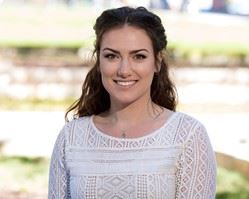 Natalia Peddycoart, MSSW is a Career Development and
Program Coordinator at San Diego State University. She holds a bachelor's
degree in psychology from the University of San Diego and a master’s degree
from The University of Texas at Austin. She is passionate about empowering
professionals who want to advance in their career development. With experience
working in nonprofits, government, higher education, and policy, she provides a
diverse perspective on career pathways available to all audiences.
Natalia Peddycoart, MSSW is a Career Development and
Program Coordinator at San Diego State University. She holds a bachelor's
degree in psychology from the University of San Diego and a master’s degree
from The University of Texas at Austin. She is passionate about empowering
professionals who want to advance in their career development. With experience
working in nonprofits, government, higher education, and policy, she provides a
diverse perspective on career pathways available to all audiences.
The dreaded resume…a seemingly simple document that elicits immediate distress and is only surpassed in anguish by the even more dreaded cover letter. I am a firm believer that it does not have to be this way. Creating documentation to track your skills and achievements can be an extremely empowering process, once you learn the tricks of the trade. Enter me: your local career development aficionado, ready to share best practices for your job search. Let’s start with the resume foundation:
- Focus on skills. Your resume is not a list of tasks nor is it a description of your previous agency’s mission. The resume should highlight your skills and accomplishments. Social work is a wonderful blend of methodology and connection. Your resume should reflect the same! Technical skills and interpersonal skills will help you describe now only WHAT you did, but HOW you did it and WHY.
- Write your resume for your audience (aka the employer). This is particularly important if you are transitioning into a new area or field. The best way to write for your audience is to read the job description carefully. Then read it again…and a third time for good measure. The agency is telling you EXACTLY what they are looking for in a candidate. Treat this as your cheat sheet. Use the same verbs and keywords they do and translate your past experiences into language they will understand. This also means that every resume you submit should be tailored to that specific job. Quality over quantity.
- Be mindful of format. Fancy online templates can be difficult for Applicant Tracking Systems (ATS) to parse correctly. While not all employers have advanced ATS software, keep in mind that these templates can make it difficult for employers to find the details they are looking for quickly. They also tend to reduce the amount of content you can fit on one page and are VERY difficult to edit regularly.
One of the most common questions I receive as a career counselor is, “Are cover letters really necessary?” While this question usually comes from an internal hope that I will tell them they are indeed unnecessary, job seekers quickly show disappointment when I tell them they still hold an important purpose. The cover letter is where you show your interest in the position and align yourself with the agency. I have had more than one employer tell me that they kept a candidate in the running who was not as experienced as the other candidates because they wrote a compelling cover letter. The passion they showed for the work let the employer know they would be a dedicated employee and would be a good fit with the agency. The resume is the receipt of the work you have done, but the cover letter is a glimpse into what it will be like to work with you. In a cover letter, remember to:
- Outline how your professional goals align with their agency mission. This requires that you do research into the agency or department to learn about their purpose.
- Highlight 2-3 skills pertinent to the position. Match their top job description qualifiers with skills you have and be specific with how you have used them successfully in the past. These brief anecdotes should be more detailed than your resume dot points but should be shorter than what you would say in an interview. Targeted but concise.
As you think about your job search, remember to think both forwards and backwards. It is most common to start with a keyword (aka “Medical Social Worker''), but this kind of search can be limiting if you are looking for a non-traditional role. Consider thinking about where you want to work and for whom. Research nonprofits and companies that are doing inspiring work and follow them on LinkedIn to be the first to know when they are hiring for a position. LinkedIn is a great platform for finding out about new agencies, especially now that remote work is more common. Indeed is another common option because of its reach (it is the largest job search platform), but consider also including in your search more targeted platforms such as NASW’s job search function. Need a supervisor for your 3,000 hours to become fully licensed? Use CSCSW’s supervisor finder. Using a multi-pronged approach to your search will help keep you engaged in the process and expose you to multiple options when one runs dry. Remember, being intentional with your application documents will result in a productive job search. Be patient, ask for help, and think outside the box.
Film review: Mira, Mirabel
By Romina Mogtaderi, MSW Student Intern, CSCSW
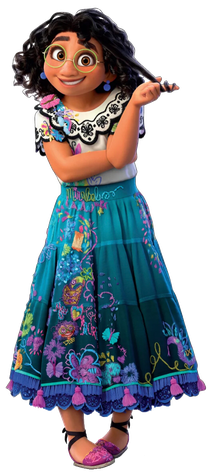 As the darkness begins to fade, sounds of the Colombian tropics transcend through the room. “Abre los ojos . . . open your eyes . . .” A hand gracefully rested on another’s shoulder as the screen pans out to focus on the pleasant aroma of a lit candle embroidered with butterflies, giving us a taste of what is to come.
As the darkness begins to fade, sounds of the Colombian tropics transcend through the room. “Abre los ojos . . . open your eyes . . .” A hand gracefully rested on another’s shoulder as the screen pans out to focus on the pleasant aroma of a lit candle embroidered with butterflies, giving us a taste of what is to come.
Walt Disney Animation Studios’ Encanto demonstrates the power of our senses by evoking [our] cognitive sensations through an external screen.
Inherently acquired through one’s senses, cognition reveals our thoughts and understanding of the world—producing ideas and images authenticated through our experiences. The film emphasizes the power of external stimuli acquired through [our] senses; however, the concept of sight plays a significant role in the film. Visual perception allows us to see what is real—as opposed to what is imagined.
Encanto challenges the notion of magic through its interplay between imagination and reality. The multigenerational Madrigal family live together in their personified home, Casita, within a village surrounded by the mountains of Colombia (home to the literary theme of magical realism).
Magical realism is very much alive in this story. The film gracefully applies the delight and spirit of magic as a parallel to our reality. The reality within the diegesis are the characters’ identity, heavily influenced by the magical powers individually given to members of the Madrigal family. Without their powers, however, it is difficult to identify exactly who the characters are.
Similarly, we are often identified by our own faculties. If they cease to exist, we lose touch of who we are.
This cognitive distortion sets the tone of the film. Abuela Alma’s perception of the brightly colored Casita and the family members living within is no more than black-and-white thinking. She often catastrophizes the trajectory of the family, fearing that without their magical powers and the capacity to help the community, they will lose everything.
Aside from Abuela Alma (the Spanish term for soul), the only member of the family perceived as not having been granted with a magical gift is Mirabel. A play on the traditional name Maribel, Mirabel’s name symbolizes her innate gift (Mira, the Spanish term for sight, and Bel—an abbreviation of the word bella—beauty).
Mirabel’s innate gift is sight. Her ability to see her family beyond their gifts is what ultimately saves the Encanto. Her thoughts and understanding, shaped by her cognition, provide her with the capacity to help her community. She attempts to heal what she sees broken in ways that she has the capability to. She sees the deconstruction of Casita before anyone else did, recognizing that they live in a broken home. She sees Abuela’s emotional energy transcend, recognizing the sorrow within her soul. She sees Bruno’s love for his family, so much so that he left to protect Mirabel.
Mirabel exemplifies the power of cognitive function through external stimuli, seeing what is real as opposed to what is imagined.
Romina Mogtaderi joined the CSCSW team as the first student intern in January 2022. Romina is a Master of Social Work candidate within the University of Southern California, Suzanne Dworak-Peck School of Social Work.
Cartoon : Looking within or asleep
By Jean Rosenfeld
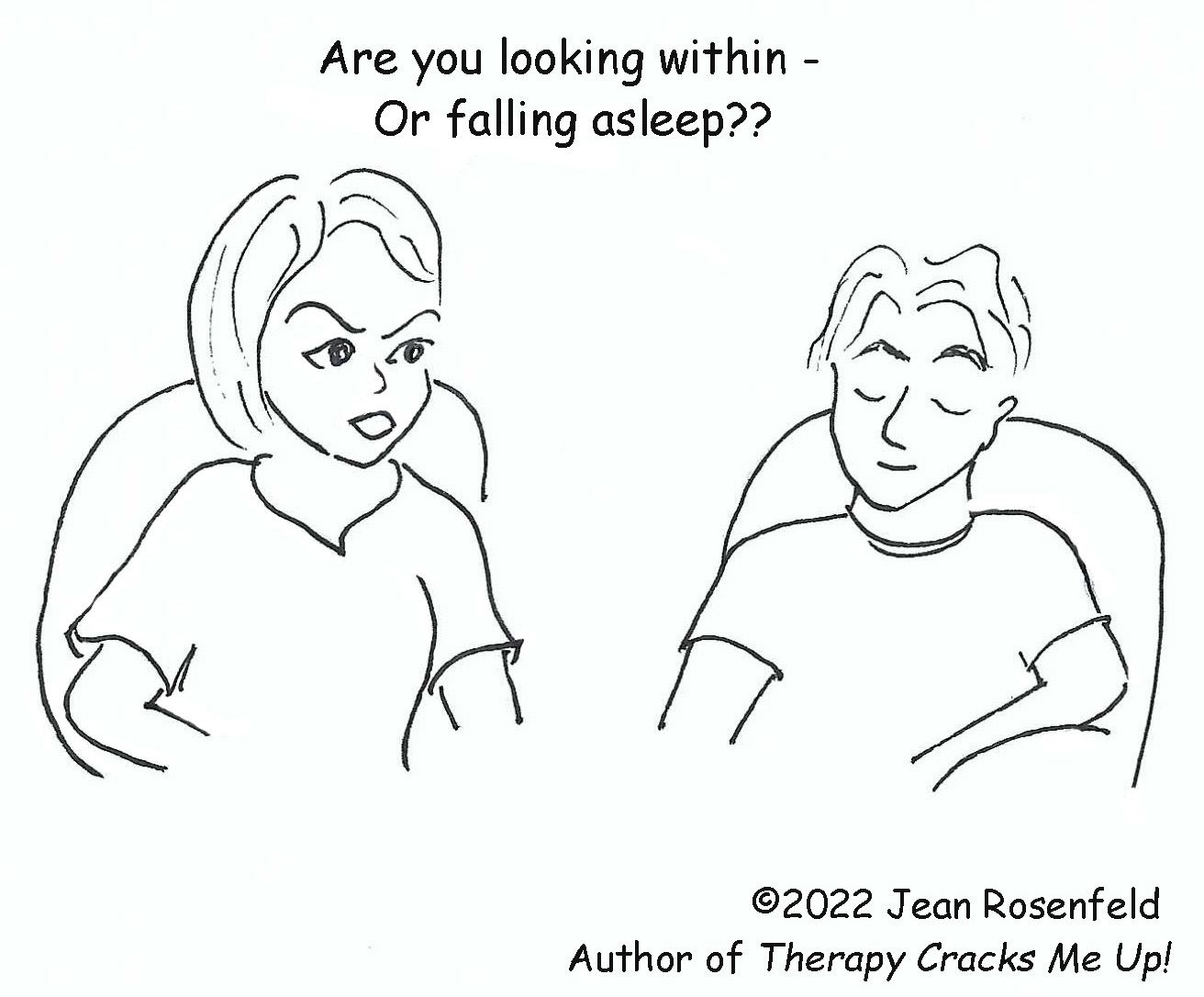
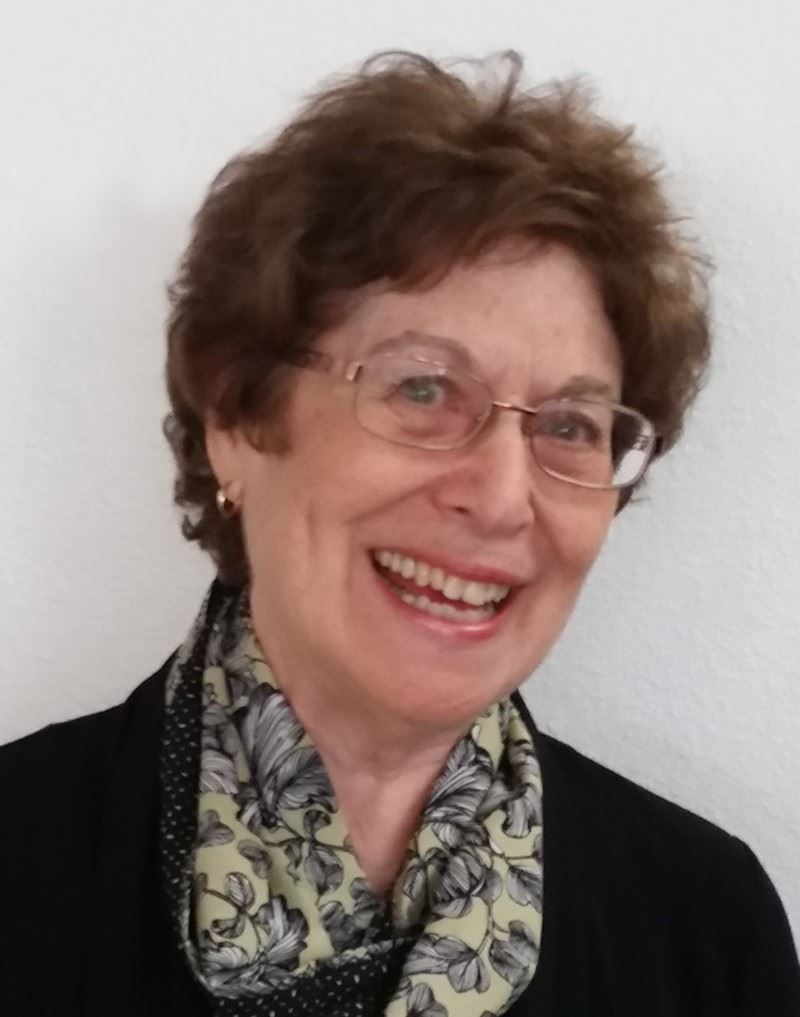 Jean Rosenfeld, LCSW is in private practice in the Sacramento area treating adults as individuals and couples. She has been involved with the Clinical Society for decades, as district coordinator, board member and former editor of this newsletter. Her book, Therapy Cracks Me Up! Cartoons about Psychotherapy, is on Amazon. She can be reached at Jeanrosenfeld@gmail.com
Jean Rosenfeld, LCSW is in private practice in the Sacramento area treating adults as individuals and couples. She has been involved with the Clinical Society for decades, as district coordinator, board member and former editor of this newsletter. Her book, Therapy Cracks Me Up! Cartoons about Psychotherapy, is on Amazon. She can be reached at Jeanrosenfeld@gmail.com
Update from BBS Liaison (Alicia Martinez and Sarah Jayyousi)
Please follow the following link for BBS / Law Changes for 2022.
New required Supervisor Self-Assessment Report
Extension of Waiver for face-to-face supervision until March 31, 2022
LAW Change Regarding Emotional Support Animals
Practice Setting Definitions and Supervision Law Changes
Updated Requirement to Provide Notice to Psychotherapy ClientsOther Law Changes (Scope of practice and LCSW continuing Education)
Surprise Billing Federal Rulehttps://www.bbs.ca.gov/consumers/law_changes_2022.html (BBS Links to above Law Changes)
Statues and Regulations Relating to the Practice of Clinical Social Work (Complete Regulations Book)
You can also visit the handbook for future LCSWs at
https://www.bbs.ca.gov/pdf/publications/lcsw_handbook.pdfAnswers to frequently asked questions for Associate Clinical Social Workers can also be found at:
https://www.bbs.ca.gov/pdf/publications/asw_faq.pdfStandards of Practice for Telehealth can be found on the following site:
https://govt.westlaw.com/calregs/Document/I586A000922974EA6A84F0657D0FC3563?viewType=FullText&originationContext=documenttoc&transitionType=CategoryPageItem&contextData=(sc.Default)and also referenced below
https://leginfo.legislature.ca.gov/faces/codes_displaySection.xhtml?sectionNum=2290.5&lawCode=BPCCommunity poem: Journey of Embracing My Diverse Identity
By Anonymous Board Member
Living between two worlds
Not fully belonging to one
Pressure to be similar to all
Push away ties to culture
Seen as similar to others outside
Feeling different inside
Hearing painful remarks
Tearing the soul from within
Sensing aggressions from others
Yet questioning my sanity
Stares coming from all around
Leading to feeling unwelcome
With or without bad intentions
Others’ action led to feeling invisible
Pressure to be similar
Lead to not being true to oneself
Questions and hurtful remarks
Feel discounted at the core
Not seeing different as good
But seen as a challenge to mainstream
My true self is present
Regardless of what others see
What others choose to say or not
Does not change who I am
Different is good and precious
Perfectly made by a higher power
To shine and be seen apart
From all others
Stars of all sizes
Shine at different brightness
Gems of different colors
Are precious and rare
No matter how made or if rare
Perfectly complete and valued
No matter the size or color or origin
Perfectly elegant as is
No matter how shaken or broken
Eternally strong and resilient
About the Clinical Update
Editor: Janny Li, MSW, ASW
The Clinical Update publishes relevant, educational, and compelling content from clinicians on topics important to our members. Contributions and ideas for articles can be sent to Jannyli.msw@gmail.com -- please write "Newsletter" in the subject line.
.png)
